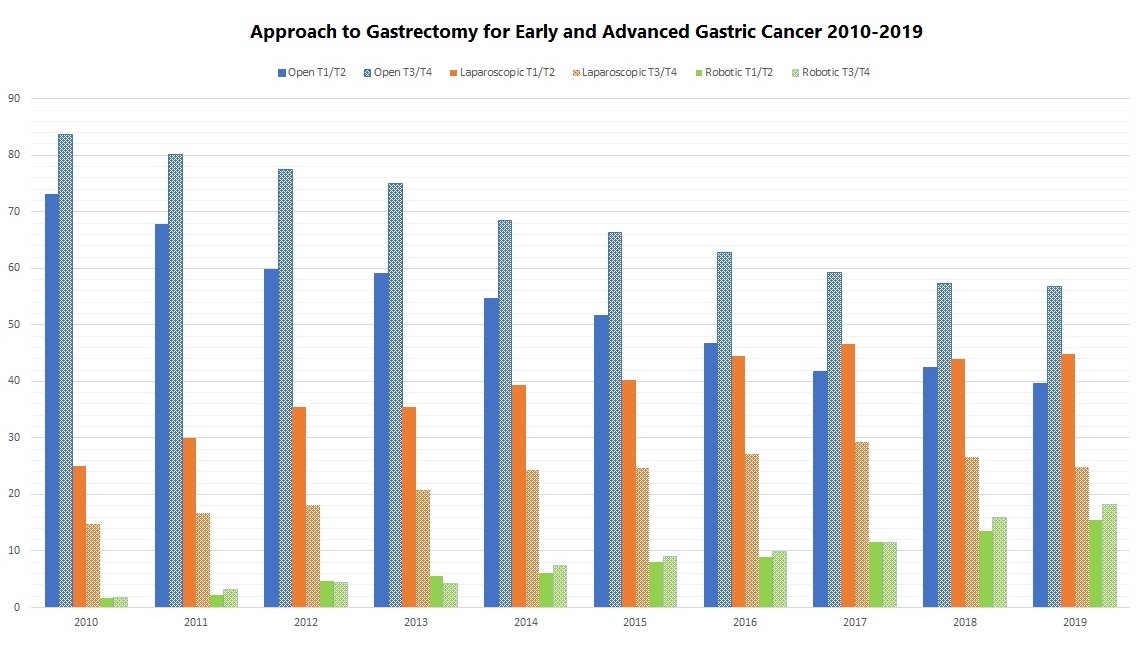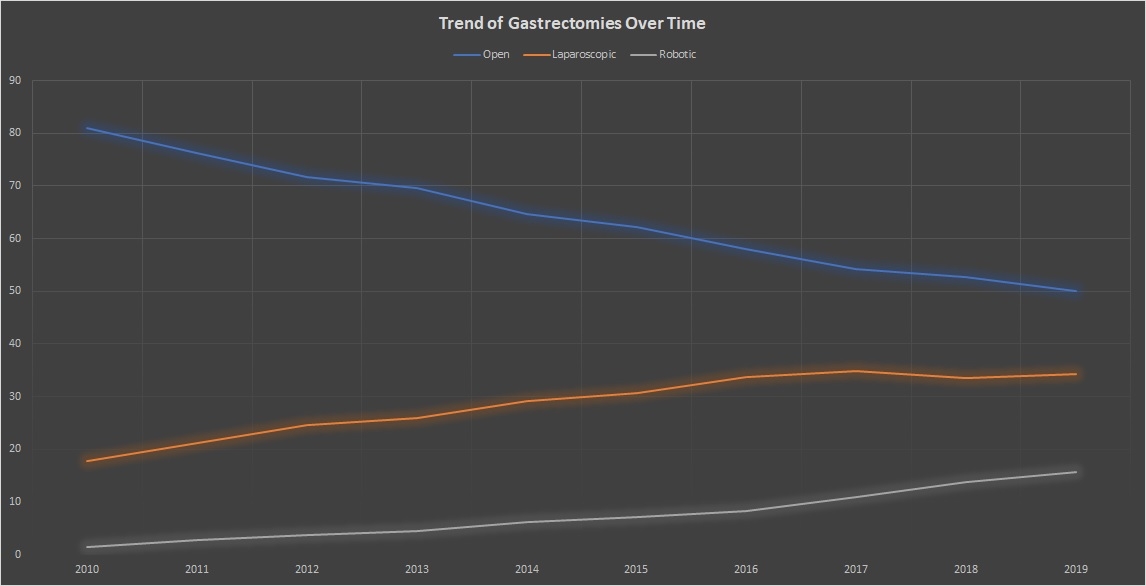Back to 2024 Abstracts
TRENDS IN THE ADOPTION OF ROBOTIC GASTRECTOMY FOR GASTRIC CANCER
Shruti Koti
*, Neda Amini, Martin S. Karpeh
Department of Surgery, Northwell Health, New Hyde Park, NY
Introduction:
Minimally invasive surgery has been increasingly adopted in oncologic resections over the past decade. Data on the use of robotic-assisted gastrectomy for gastric cancer have primarily been reported by institutions in East Asia, however, its prevalence in the United States is unclear. Here we describe trends in the adoption of robotic-assisted gastrectomy.
Methods:
The National Cancer Database was reviewed from 2010-2019, and patients with a diagnosis of gastric adenocarcinoma were selected. The approach to operation is specified as open, laparoscopic, and robotic.
Results:
A total of 39,159 patients met inclusion criteria for analysis. The majority of robotic cases were performed at academic centers and comprehensive cancer programs (56.6% and 22.7%), compared to open cases (46.5% and 30%), p<0.001. Most gastrectomy operations took place in metropolitan areas: 85% of open operations, 85.8% of laparoscopic cases, and 88.5% of robotic cases.
Over the years, there has been an increase in robotic surgery, with 1.5% of gastrectomies in 2010 being robotic, while in 2019, 15.7% were robotic (Figures 1 and 2). This was true for both early and advanced disease: T1/T2 clinical stage disease made up 49.8% of all robotic cases during this time, and T3/T4 made up 50.2% of robotic cases, all p<0.001.
Overall, 30-day postoperative mortality was 4.0% for open gastrectomy, 2.2 % for laparoscopic and 2.3% for robotic gastrectomy's (p<0.001). 93% of patients undergoing a robotic approach had an R0 resection, compared to 87.1% in open cases (p<0.001). The median number of lymph nodes retrieved was 16 for open cases, 17 for laparoscopic, and 19 for robotic (p<0.001).
Conclusion:
The percentage of gastrectomies performed robotically has significantly increased in the treatment of gastric cancer over the past two decades, for both early and advanced disease. The robotic approach was more often performed in academic centers, and had a higher percentage of R0 resections and greater lymph node yield compared to open approach. Minimally invasive gastrectomy is being increasingly utilized for the treatment of gastric cancer in urban areas and academic centers.


Back to 2024 Abstracts

